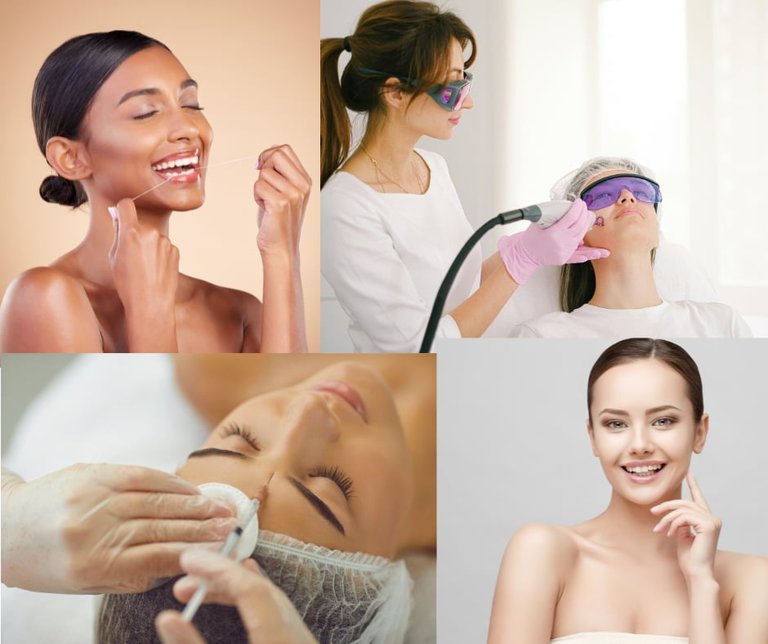HOW SOCIAL MEDIA FUELS THE BEAUTY INDUSTRY IN THE PHILIPPINES

If you’re in your 30s or beyond, how do you address changes in your body? What steps do you take to maintain your beauty?
With the rise of social media, I’ve noticed a growing trend—many women entrepreneurs are entering the beauty industry, launching brands that promise quick and transformative results, from whitening to slimming and anti-aging solutions. Fueled by strong public demand, the Philippine beauty industry has now grown into a multi-billion-peso market. Yes, you got it right! Multi-billion!
Some local brand founders undergo cosmetic enhancements, model their own products, and quickly label themselves as "CEOs." Without proper research and testing, they market their products as highly effective. This misleading approach convinces some women to patronize their brands and share personal testimonials—without realizing that the results they admire may be due to cosmetic procedures rather than the products themselves.
I am tan-skinned. When I was in my mid-20s, I also tried various whitening and slimming products, eager to conform to beauty standards that were widely accepted at the time. Since I have aged, my priorities have shifted. Instead of focusing on instant results, I choose safety, quality, and proven efficacy.
However, the rise of social media-driven beauty trends has led many consumers to make purchasing decisions based on visibility rather than verified safety.
I would like to think that the success of many beauty and wellness brands today can be attributed to the power of social media. Platforms like Facebook, Instagram, and TikTok have lowered the barriers to entry for small businesses, allowing them to reach thousands—if not millions—of potential customers without traditional advertising
Social media has transformed beauty marketing through:
• Influencer Endorsements – Products gain credibility through influencers, even those without dermatological expertise.
• Before-and-After Photos – Visually compelling transformations create a strong emotional appeal, driving impulse purchases.
• Viral User Testimonials – Consumers often trust "real people" sharing their experiences, even when those reviews lack scientific validation.
These marketing techniques create a sense of urgency and fear of missing out (FOMO) among consumers, persuading them to buy products based on aesthetics rather than verifying their safety or effectiveness.
Aside from skincare, these local brands now also offer ingestible beauty products—such as glutathione-infused whitening drinks, slimming coffees, and collagen-based anti-aging beverages. These products promise beauty from within, but the lack of transparency and regulation raises significant concerns.
Despite the strict guidelines set by the Philippine Food and Drug Administration (FDA), many brands bypass regulatory processes and sell their products online without proper approval. Unaware of the potential health risks, consumers often assume that if a product is widely available, it must be safe.
This is where responsible consumerism comes in. Before purchasing any beauty or wellness product, one should ask:
✔ What are the ingredients? Are they scientifically proven to be safe and effective?
✔ How is it manufactured? Does the company follow proper production standards?
✔ Is it FDA-approved? Has it undergone third-party testing to ensure compliance with safety regulations?
The truth is, most consumers buy product because of affordability and accessibility instead of effectivity and safety. This is particularly true for consumers in Classes B to D, who make up the largest market segment for these products. Unlike premium beauty brands that emphasize dermatologist-backed formulations and safety certifications, many trending products thrive on low pricing and aggressive social media marketing.
Looking at the trend now, it seems that the demand for beauty and wellness products in the Philippines will continue to grow, but long-term success in this industry will depend on consumer awareness and responsible business practices.
I look forward to a shift toward more informed beauty choices—where consumers prioritize research over curiosity sparked by misleading advertisements. As consumers become more aware of the risks associated with unverified products, the demand for transparent, research-backed, and ethically marketed beauty solutions will inevitably rise.
Looking back, I do not regret trying whitening and slimming products in my younger years. However, I am now more critical of what I put on and into my body. Rather than chasing unrealistic beauty ideals, I focus on nurturing my skin and overall well-being.
For aspiring beauty entrepreneurs, the challenge is clear: short-term sales can be achieved through trends, but long-term success relies on building trust. The brands that will thrive in the future are those that prioritize safety, transparency, and ethical marketing.
Because in the end, beauty should not just be about instant gratification—it should be about making informed choices that benefit both consumers and businesses in the long run.
Thumbnail Photo created with Canva.com
Posted Using INLEO
View or trade
LOHtokens.@indiasierra, You have received 1.0000 LOH for posting to Ladies of Hive.
We believe that you should be rewarded for the time and effort spent in creating articles. The goal is to encourage token holders to accumulate and hodl LOH tokens over a long period of time.
!LADY
View or trade
LOHtokens.@hive-124452, you successfully shared 0.1000 LOH with @indiasierra and you earned 0.1000 LOH as tips. (28/50 calls)
Use !LADY command to share LOH! More details available in this post.